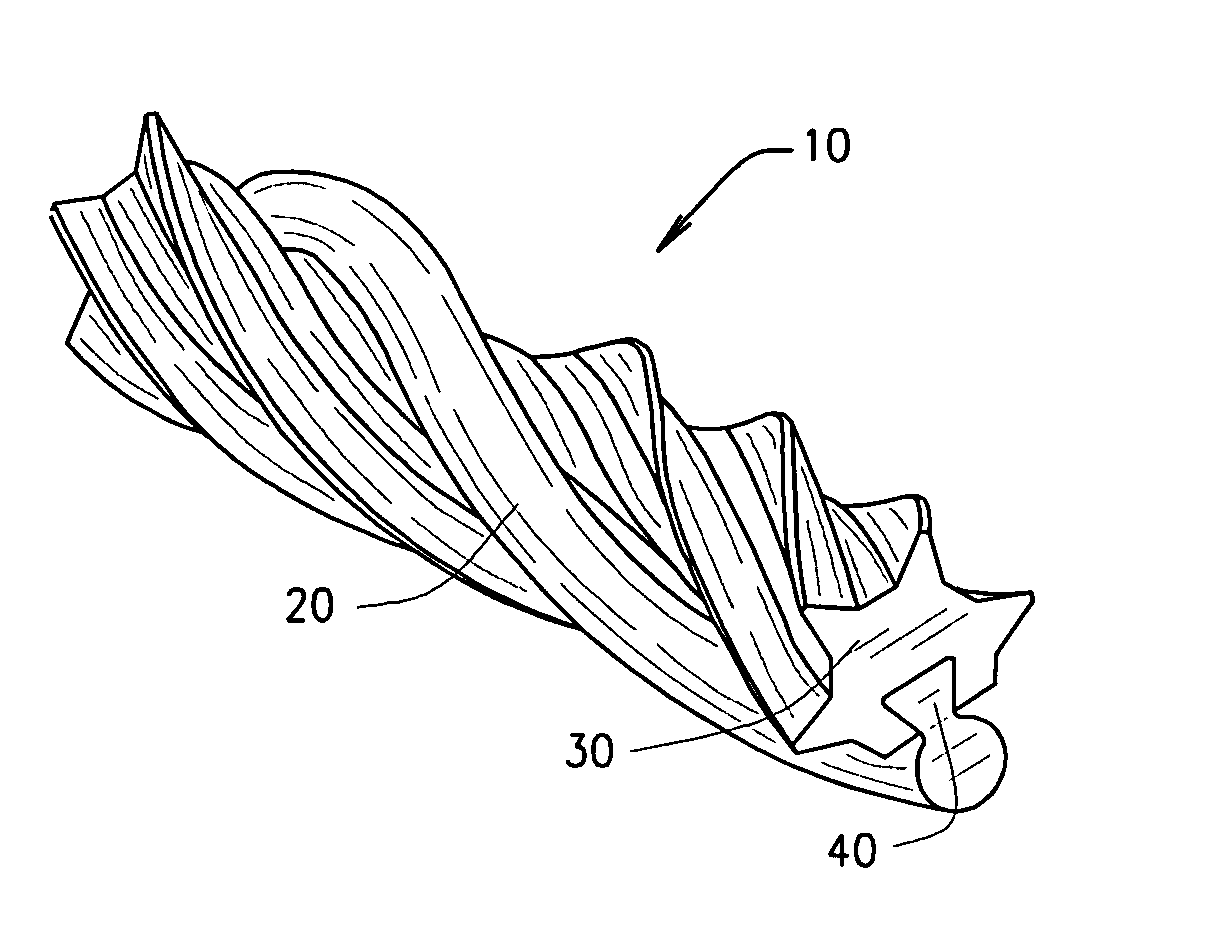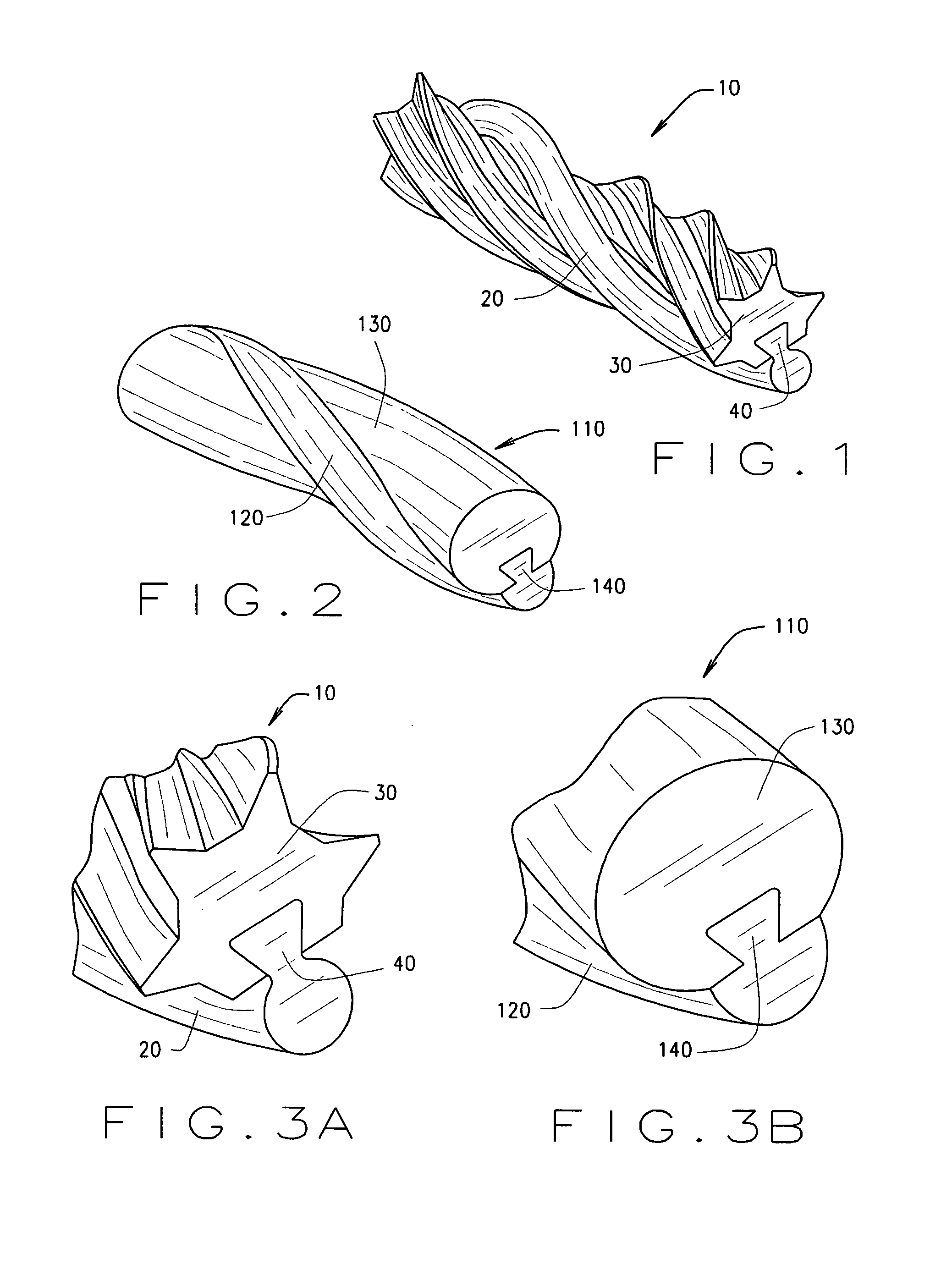Multi-textured animal treats
a multi-textured, animal technology, applied in food preparation, sweetmeat, bakery products, etc., can solve the problems of not promoting strong teeth in pets in the same degree, dry, dusty appearance, dry extruded dry pet food, etc., to achieve the effect of providing resistance to an animal's teeth
- Summary
- Abstract
- Description
- Claims
- Application Information
AI Technical Summary
Benefits of technology
Problems solved by technology
Method used
Image
Examples
example 1
Hard Component
[0062]One thousand kilograms (kgs) of dry mix for the hard component was prepared by weighing each ingredient as shown in Table 1 and adding to a ribbon mixer where they were mixed to form a homogeneous dry blend.
[0063]The dry blend was then transferred to a hopper that feeds a first twin screw extruder EV68 (TSE 1). The screws were configured for medium shear and a vent stuffer was assembled on barrel 6 (over 10) of the extruder.
[0064]After extruder start-up, the dry blend was fed into the first barrel of the extruder at 154 kg / h. The slurry Glycerin 86 (96%) / phosphoric acid 75% (4%) that was heated to 60° C. was injected into this barrel at 26.5 kg / h (17.2% of the dry mix feed rate). Water was also injected into this section at 20.5 kg / h (13.3% of the blend feed rate). The screw speed was adjusted at 170 rpm. The pressure at the front plate was around 100 bars. The barrels were all cooled down thanks to chilled water to keep the temperature of the dough below 100° C....
example 2
Soft Component
[0065]Two hundred sixty (260) kilograms (kg) of dry blend for the soft component was made by weighing ingredients as shown in Table 2 into a ribbon mixer where they were mixed to form a homogeneous dry blend.
[0066]The dry blend was then transferred to a hopper that feeds a second twin screw extruder BC45 (TSE 2) of lower capacity. The screws were configured for medium shear.
[0067]After extruder start-up, the dry blend was fed into the first barrel of the extruder at 40.5 kg / h. The slurry Glycerin 86 (96%) / phosphoric acid 75% (4%) that was heated to 60° C. was injected into this barrel at 12.0 kg / h (29.6% of the dry mix feed rate). Water and Soya Oil was also injected into this section respectively at 5.7 kg / h (14.1% of the blend feed rate) and 3.3 kg / h (8.2% of the blend feed rate). The screw speed was adjusted at 320 rpm. The pressure at the front plate was around 100 bars. Some of the barrels were heated up to 55° C. to help gelatinizing the starch. This melt was the...
example 3
Forming the Multi-Textured Twist Product
[0068]As shown in Example 1 (the hard extrudate) and Example 2 (the soft extrudate) were both formed separately and combined at the very end of the die assembly. As visible on the die drawings, the soft component die channel was designed to create a dovetail into the hard part die channel. Both extrudates are shaped separately nearly all the die long. The flow paths were brought in contact 10 mm before the die outlet. The bonded ropes were rotated as they exited the die assembly creating a braided structure. The twisting effect reinforced the bond between the 2 parts by closing the groove where the soft dovetail is entrapped. The twisted ropes were cut with an ultrasonic cutter in approximately either 70 mm, 110 mm or 140 mm inch pieces, depending of the die cross section used. The products are cooled down to 20° C. and stored before being packed in moisture barrier flexible bags. The product is shown in FIG. 1 and FIG. 3A. The products stored...
PUM
 Login to View More
Login to View More Abstract
Description
Claims
Application Information
 Login to View More
Login to View More - R&D
- Intellectual Property
- Life Sciences
- Materials
- Tech Scout
- Unparalleled Data Quality
- Higher Quality Content
- 60% Fewer Hallucinations
Browse by: Latest US Patents, China's latest patents, Technical Efficacy Thesaurus, Application Domain, Technology Topic, Popular Technical Reports.
© 2025 PatSnap. All rights reserved.Legal|Privacy policy|Modern Slavery Act Transparency Statement|Sitemap|About US| Contact US: help@patsnap.com


